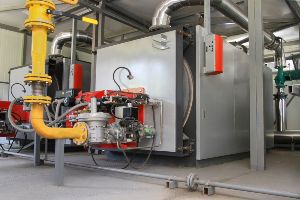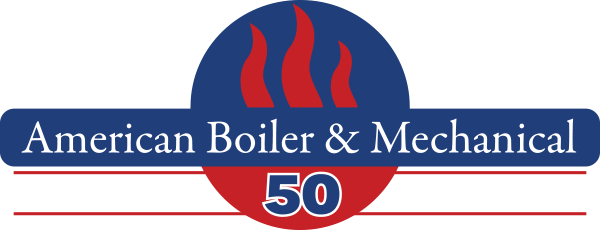
It’s Spring Break Time For Heating Boilers
A seasonal layup can conserve energy use and provide a window for maintenance.
With the onset of warmer weather, many companies look to economize on energy use by laying up heating boilers until late fall. This task raises two very large questions –
- Is this a task for your plant management staff to handle on their own, or should they bring in their mechanical contractor?
- Should you and/or your contractor select a wet layup or a dry layup process? And what are the steps involved with each?
Many experienced plant managers understand the process of boiler layup and can safely manage the task on their own, although having available staff time may be a different question altogether. Additionally, boiler layup time is often used to conduct additional inspections and cleanings, which may require the added assistance of American Boiler & Mechanical.
Regardless of who ultimately addresses the layup process, there are specific steps involved, and these steps vary widely for a wet layup and a dry layup, so let’s first address the selection between these two processes.
Wet Layup
A wet layup is often used for shorter periods of downtime since the boiler can more quickly and easily be returned to service. Additionally, some plant managers in wetter (humid) environments may lean toward a wet layup due to the problems of fully drying a boiler. The same goes for some boilers that use complex internal piping that would render complete drying to be more troublesome.
If a wet layup is selected, the boiler should be shut down according to its guidelines, which typically include turning off the fuel supply and isolating it from the rest of the piping system. Corrosion inhibitors, like sodium sulfite or other oxygen-consuming additives are added to the boiler water to inhibit corrosion and prevent freezing. The water chemistry should be checked periodically to ensure a successful layup term.
Dry Layup
Dry layups offer simple longer-term layup maintenance, as there is no water chemistry to monitor, yet they also provide adequate time and access to perform any necessary maintenance to the boiler.
The process for a dry layup also starts with turning off the fuel supply and isolating it from the rest of the system. Additionally, after cooling, the boiler is drained completely. Air dryers, desiccants and/or dehumidifiers are used to dry and keep the boiler dry during the layup. Additional desiccants are placed in trays inside the boiler and openings are securely closed to prevent moisture from entering. Desiccants should periodically be checked and replaced if they absorb moisture.
Additional Boiler Maintenance
Layup time provides ample opportunity to conduct any maintenance on the vessel, including soot and ash removal from the fireside surfaces, the combustion chamber, tubes and heat exchangers.
Regardless of the layup process selected, burners should be inspected and cleaned to help ensure optimal combustion when the boiler is restarted. Refractory materials should be checked for cracks, wear or damage and the flue and stack should be cleaned to ensure proper drafting.
Waterside surfaces should be flushed and cleaned to remove scale and other deposits. Other waterside components like the feedwater system and condensate return lines should be inspected and cleaned to ensure they operate free from scale and corrosion.
If your system uses a waste heat recovery system, it should also be inspected and cleaned during the layup time to protect it from corrosion and damage. This could involve isolating the system through the closing of valves and dampers, shutting down fans and cleaning the heat exchanger. If this system has a waterside, drain and flush it to remove contaminants, preparing it for when the season changes colder again. Then the waste heat recovery system itself should have a layup process – either wet or dry.
When the time comes to restart the boiler and heating system, follow the manufacturer’s guidelines to safely reverse the layup process.
Boilers and piping systems are integral parts of many industrial, commercial and institutional facilities. Seasonal boiler layups provide the opportunity to conserve energy while performing any maintenance necessary for the following year’s performance. It’s this downtime servicing that helps ensure the greatest efficiency and longest life possible for your boiler system.
At American Boiler & Mechanical, we’re boiler and process piping experts. If we can be of assistance, contact us by calling 800-235-5377 or through our website at www.americanboilermech.com.
